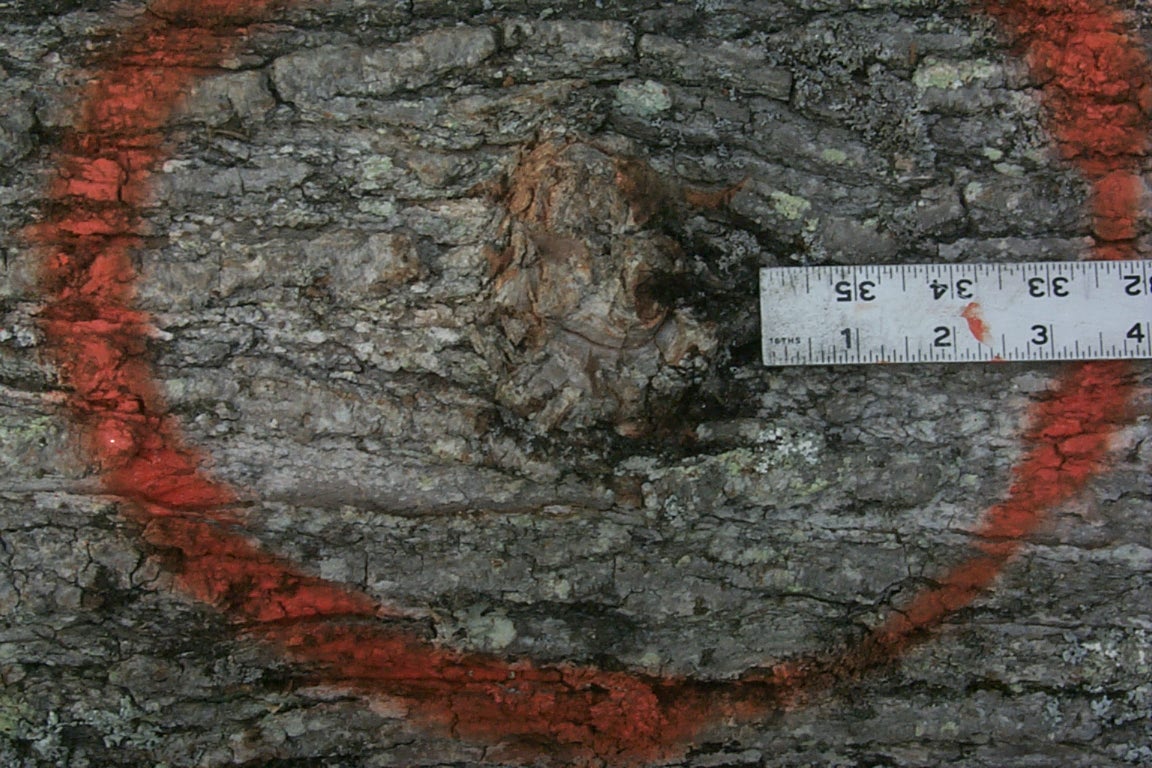
| Home |
| Tutorial |
| Photo Gallery |
| List of Defects |
| Links |
| Bark Distortion |
| Bird Peck |
| Bumps |
| Burls |
| Butt Scars |
| Butt Swells |
| Cankers |
| Conks |
| Epicormic Branches |
| Flanges |
| Flutes |
| Forks |
| Galls |
| Holes |
| Knots |
| Lesions |
| Limbs |
| Ring Shake |
| Rot |
| Seams |
| Soak |
| Splits |
| Wounds |
If the slope is less than 1 to 12, it is called a surface rise.
Medium bumps have slopes from 1 to 6 to as much as 1 to 3.
High bumps have slopes steeper than 1 to 3.
Significance: About nine-tenths of all bumps cover projecting sound or rotten limb stubs, a cluster of adventitious buds, or a concentration of ingrown degraders: insect holes, small insect caused bark pockets, and areas of both mineral and organic stain.
In veneer and factory logs, low bumps are disregarded in ash, birch, soft elm, magnolia, soft maple, tupelo, and selected white oak species; but medium and high bumps in these hardwoods are degraders. In other species, all bumps are degraders because even low ones cover blemishes that regularly extend into the quality zone, where they restrict clear veneer areas or clear cuttings for other factory log uses.
In construction logs, the size of the underlying blemish regulates its effect. If the diameter of the bump is less than one-third the log diameter at the point of its occurrence or if the diameter of the underlying degrader is estimated to be less than one-fourth the width of a face of the largest included timber (determined from the small end of the log), the abnormality is ignored as a grading defect. If the underlying feature is larger, it is a degrader. In the case of a low bump, it is more difficult to approximate the size of the underlying blemish. Typically, however, the blemish is so large that a low bump must be judged a log grade defect in cedar and rock elm and in black, chesnut, overcup, pin, scarlet, and water oak. Low bumps are disregarded in construction logs of other species.
Standing trees: Recognition of medium and high bumps will be easy, but low bumps demand careful scrutiny to provide sure separation from surface rises.


